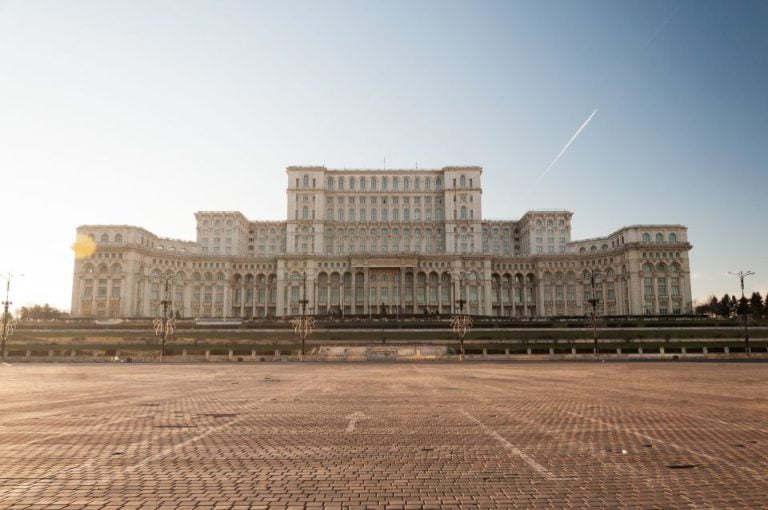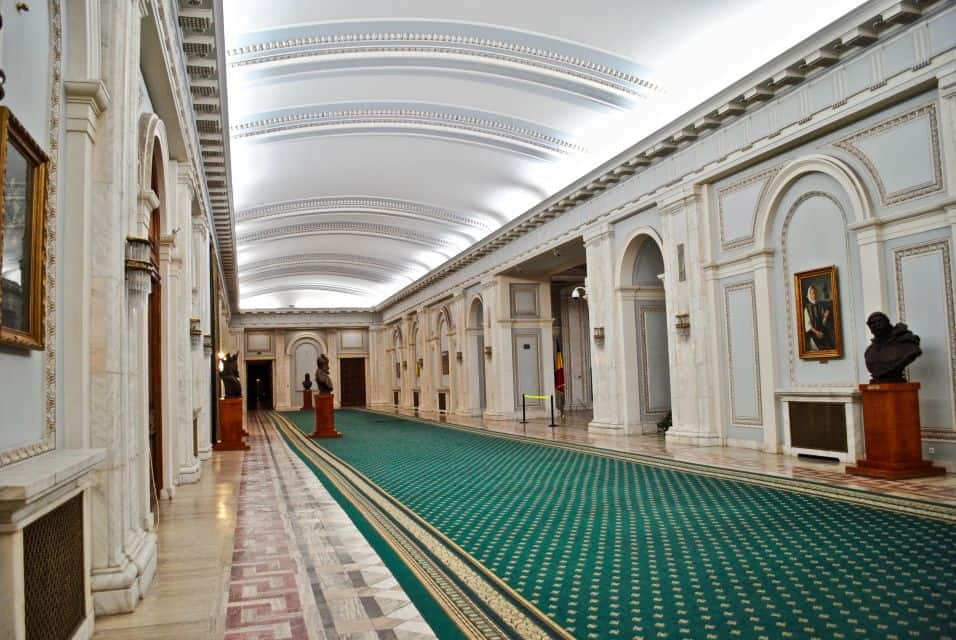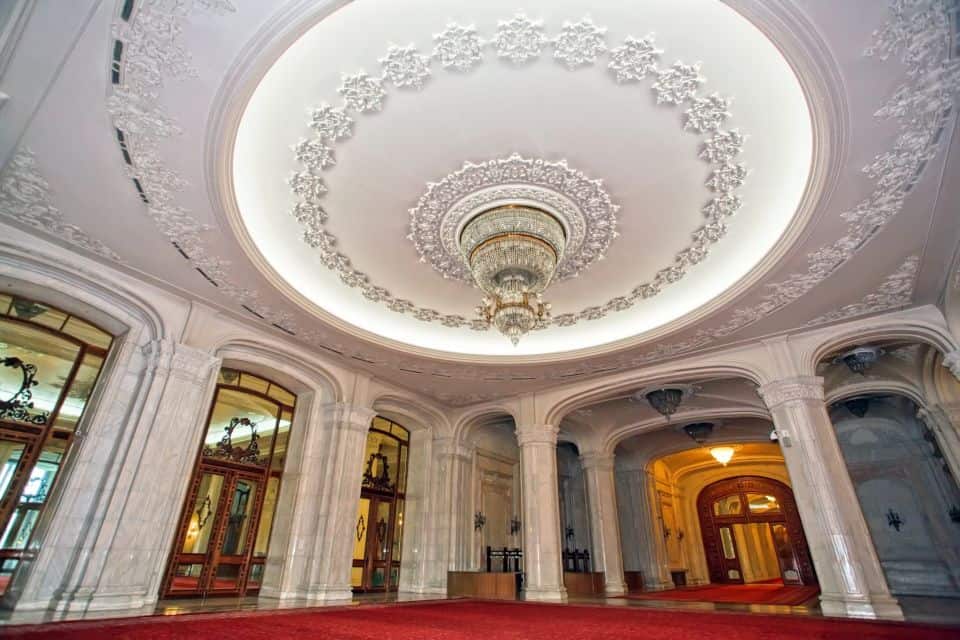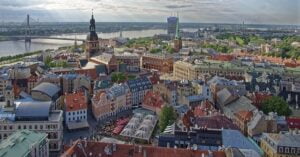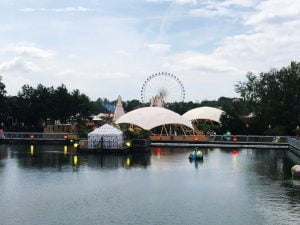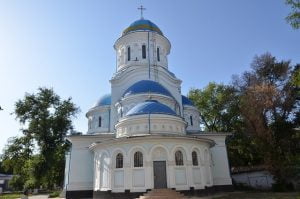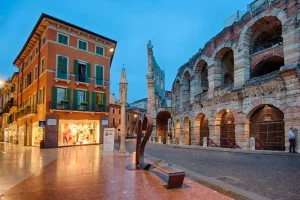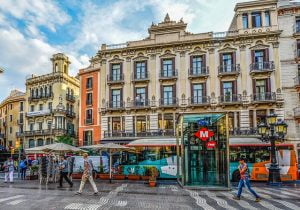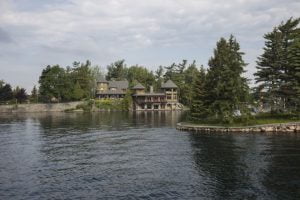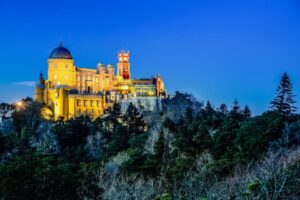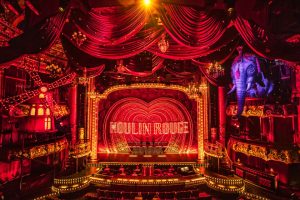Palace of Parliament in Bucharest
Buying entrance tickets to the Parliament Palace includes skipping the queues!
The magnificent palace in the heart of the city of Bucharest
In the heart of the city of Bucharest, at the end of the famous Unirii Boulevard, is the Palace of the Parliament in Bucharest, which is considered the second largest administrative building in the world after the Pentagon in the USA.
The Palace of the Parliament of Bucharest is undoubtedly one of the most magnificent buildings you will ever see. The palace covers an area of 365,000 square meters and boasts 12 floors that include 1,100 different and varied rooms.
The story of the Parliament Palace:
The history of the Palace of the Parliament in Bucharest is a complex story of political ambition, national pride and architectural splendor. The palace, established by the former communist dictator of Romania Nicolae Ceaușescu (Nicolae Ceaușescu) in the early 80s, is a clear symbol of the adoration of the leader in the communist era and is a testament to the country's rich cultural heritage.
The idea of building the Parliament Palace grew out of Ceausescu's vision to build a "civic center" that would showcase the power and prosperity of communist Romania. This vision was fueled by his visits to other countries, such as North Korea, where he was inspired by grandiose architectural projects. Ceausescu wanted to create a building that would house all the major government institutions and he would perpetuate his regime for many years even after he was no longer in power.
To make way for the controversial grandiose project, Ceausescu's rule destroyed much of Bucharest's historic city center, displacing thousands of residents and destroying many churches, homes and historical landmarks. The construction of the palace required a huge workforce, and more than 20,000 workers and 700 architects took part in the project and worked around the clock in difficult conditions.
Construction of the Palace of Parliament began in 1984, and although most of the work was completed before Ceausescu was overthrown and executed in 1989, the building remained unfinished until the early 90s.
The palace was built mainly with materials originating from Romania, including one million cubic meters of marble, 3,500 tons of crystal for the magnificent chandeliers that cover the palace's ceilings, and huge amounts of wood, velvet fabrics and gold for the magnificent spaces inside the palace.
After the fall of the communist regime, the palace became a symbol of the oppressive regime of the Ceausescu era, and many debates arose about its future. After arguments and disagreements, it was decided to repurpose the building for government institutions and various cultural institutions.
Today, the Parliament Palace houses, among others, the Romanian Parliament, the National Museum of Contemporary Art (MNAC), the Communist Museum and the fascinating Palace Museum.
Despite its controversial history, the Palace of the Parliament is considered an architectural marvel and a significant part of Romania's cultural heritage. The immense splendor of the building, its size and the fascinating art in it continue to fascinate visitors from around the world who come to watch the story of the communist regime in the country.
What do you see when visiting the Parliament Palace?
The point of visiting the palace is to admire the grandiose architecture and the magnificent palace spaces that leave a strong impression and many thoughts on the palace visitors. During a visit to the palace, do not miss the following spaces:
- The facade of the palace (Facade) - Pay attention to the impressive facade of the palace, its complex design and the massive and illogical scale. The building is decorated with marble columns, decorations, and a combination of neo-classical and socialist architectural styles that create a spectacular and special structure.
- "The Union Hall" - the huge hall in the center of the palace includes a 3-ton crystal chandelier hanging from a spectacular dome. This space was and still is often used to receive important guests, ceremonies and special events.
- The Senate Hall - This elegant hall is the main meeting room of the Romanian Senate, and is decorated with marble columns, mirrors and an impressive crystal chandelier.
- The Nicolae Bălcescu Hall - This magnificent hall has a unique glass ceiling, which allows natural light to illuminate the space. The hall is used for parliamentary meetings and press conferences.
- The palace balcony - a beautiful point of visit in the palace that offers a panoramic view towards the magical city center of Bucharest.
- The underground passages of the palace (Underground Passages) - an interesting point when visiting the palace, underground caves with a length of dozens of kilometers that connect the centers of the palace to important points in the city.
- The impressive art collections - the National Museum of Contemporary Art (MNAC), the Communist Museum and the Palace Museum are all housed within the Parliament Palace. You can visit these museums and be impressed by the works of art, the history of communism in the country as well as find out more about the fascinating palace.
Important Information
The visit to the Palace of the Romanian Parliament is possible only through a guided tour. The guided tours, offered in several languages, will take you to explore the magnificent palace spaces and the most special places in the huge structure.
It is recommended to book the guided tours in advance.
Guided tour of the Parliament Palace:
One of the most recommended and fascinating tours is the EASTERN EUROPEAN EXPERIENCE company tour that will take you to discover the magnificent palace in an interesting and easy way.
The tour ticket allows you to skip the line (which in the summer months is very, very long..)
The tour is accompanied by a professional and humorous local guide, and lasts about an hour, during which you will visit the three most interesting levels in the magnificent building.
During the tour, besides visiting the magnificent spaces in the palace, you will receive a lot of information and crazy facts about the palace and its construction.
One of the highlights of the tour is an impressive explanation of the eight underground levels in the palace, which include, among other things, a bunker connected to the main state institutions through 20 km of underground tunnels.
important details:
Location:
The Palace of the Parliament is located in the center of Bucharest and is easily accessible by public transport. The nearest metro station is Isbor (Izvor), which is a few minutes' walk from the entrance to the palace. Also, there are bus and tram lines that reach the palace from all over the city.
Address: Strada Izvor 2, București
שעות פתיחה: The Parliament Palace is open for visits every day of the week from 9:00 a.m. to 17:00 p.m.
We note again that the visit to the Parliament Palace is through a guided tour only and it cannot be visited independently.
The visit to the Parliament Palace includes a lot of climbing up the stairs to the different levels of the palace (there is no elevator in the building), so take that into account.
You must arrive at least 15 minutes before the start of the guided tour.
It is very important to bring an identity card/passport with you to enter the Parliament Palace.
In conclusion, the fascinating history, the breathtaking architecture and the tremendous cultural heritage, make the Palace of the Parliament in Bucharest a must-see destination when visiting the city. Whether you are history and culture buffs, or travelers who want to see the city's unique sites, don't miss a visit to the magnificent Parliament Palace.

